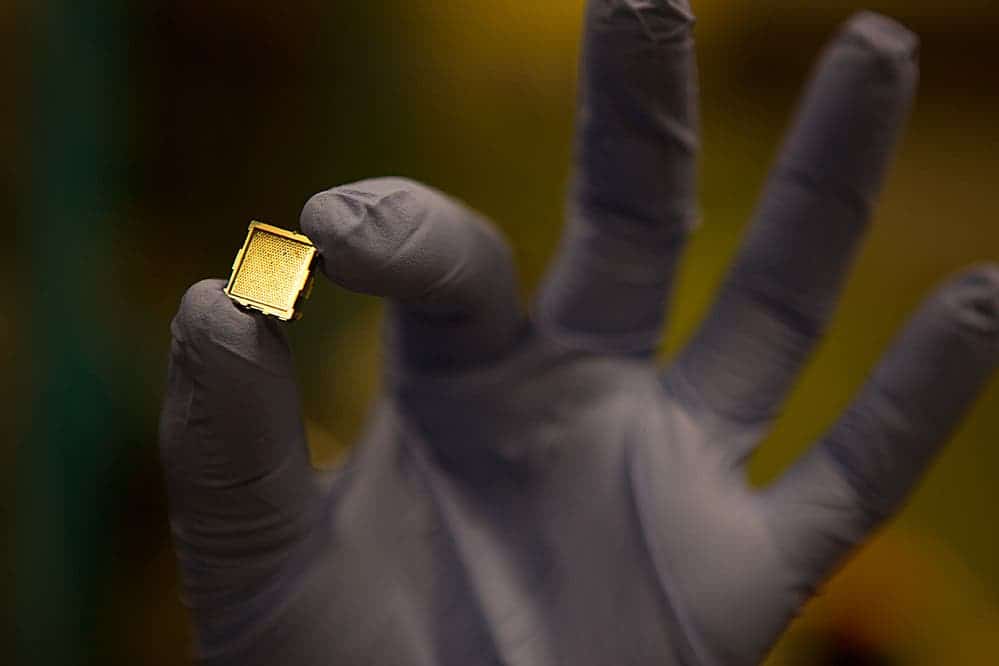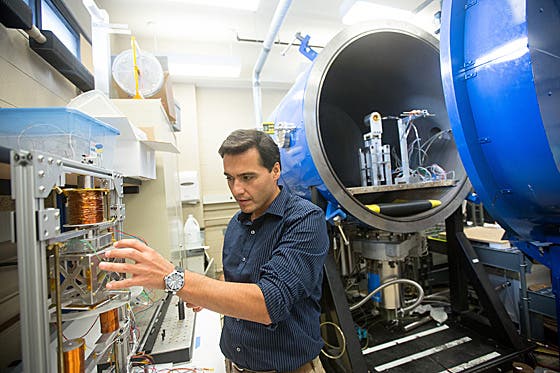
Paulo Lozano, of MIT’s Space Power and Propulsion Laboratory, is a space enthusiast for as long as he can remember, growing up with Carl Sagan’s Cosmos and spending much of his childhood in bookstores studying science and other worlds in our solar system. His passion and hard work eventually landed him a job at MIT where he has made great strides in revamping the university’s Propulsion Lab by focusing more on hardware, instead of the theoretical work mostly done during the lab’s early days.
Inside the lab, all sorts of bulky crafts can be found, like a 100 lbs. engine the kind used to generate thrust for today’s spacecraft to the moon, planets and far-off asteroids like Ceres and Vesta. Among all these massive and impressive hardware, it’s easy to miss what’s the maybe the most interesting out of the whole bunch. Amid a cluttered desk, lies Lozano’s favorite project – no larger and no heavier than a Lego brick, this device may represent the future of space exploration.
The device in question is a tiny ion thruster, the kind which will be used to cheaply and efficiently propel shoebox-sized satellites, known as “CubeSats.” These tiny satellites are really cheap to make, less than $10,000 launch cost included (piggy-bagging on more important cargo), but since they lack a propulsion system, the Cubesats eventually drift lower and lower into orbit until they enter the atmosphere and blast into pieces.

PHOTO: BRYCE VICKMARK
Clearly, you can’t use a conventional propulsion system like a combustion engine or electric motor mounted on a 10x10x10 cm box. Ion thrusters, which can run on solar power, contain a small amount of liquid propellant that, when electrified, creates a stream of ions that are released from microscale nozzles as puffs of charged gas — generating a thrust that can propel a small satellite forward. These typically deliver low thrust at a very high efficiency (up to 55 times higher than a jet engine), and their compact size makes them an ideal solution.
What this means is that Cubesats of the future and large satellites alike won’t necessarily have their fate sealed once they reach low-orbit. Furthermore, ion thrusters offer the means not only to compensate orbit, but also move satellites further into space in a cheaply manner, albeit at low velocities.
“The goal is to make [CubeSats] do most of the things we already do with big satellites, except in a less expensive way,” Lozano says. “People have very big plans for these very small spacecraft.”
“The price tag of exploration missions is too high,” Lozano says. “But imagine what would happen if you had these very small platforms. Instead of launching one, you could launch 20 for the same price. And you could do as exciting science as you could with the big ones, like go to Europa [a moon of Jupiter]. Why not? The sky is the limit.”
via MIT


